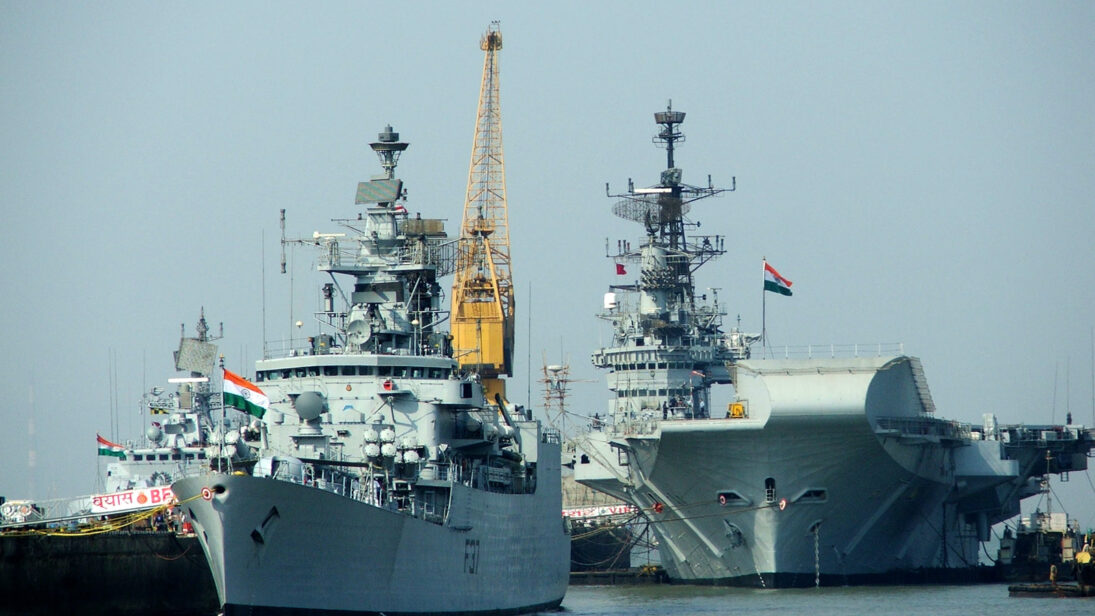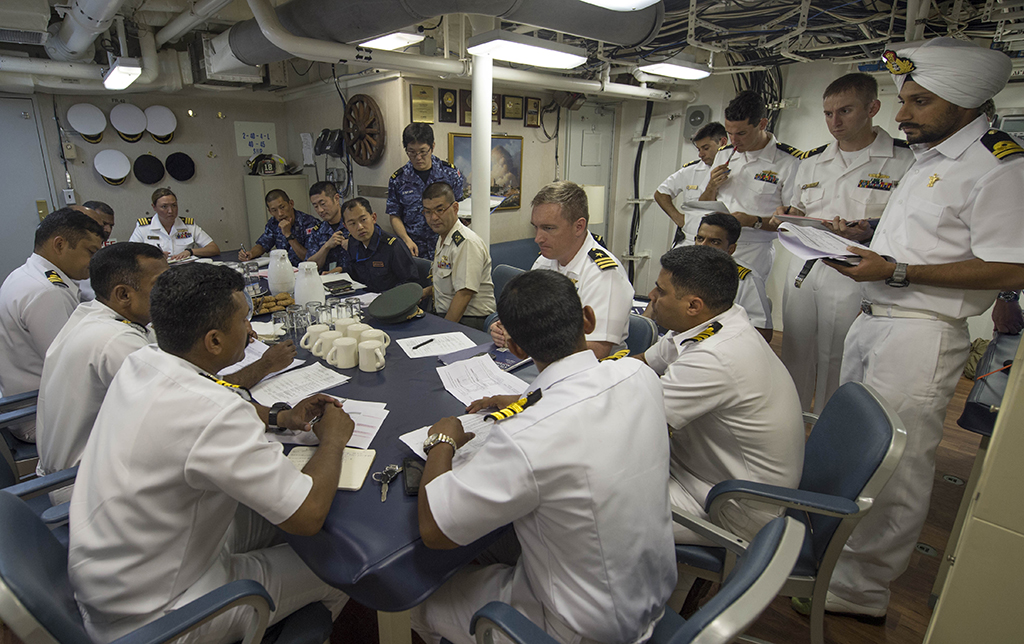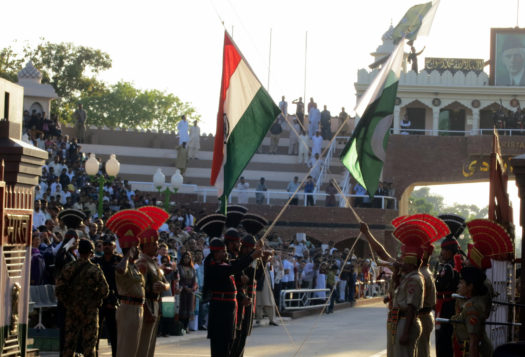
In February 2024, India bagged two achievements in the Indian Ocean Region (IOR): the commissioning of INS Jatayu, an Indian Naval base on Lakshadweep Island, and the inauguration of security establishments on Agalega Island, Mauritius. These two developments come amidst ongoing diplomatic tensions with the Maldives and broader competition with China in the IOR.
Despite providing India with significant security and economic benefits, these two recent developments also have implications for the delicate geopolitical balance of the IOR. While the IOR has historically been characterized as a Zone of Peace (ZoP), India’s naval developments could promote a race for arms and associated technology, ultimately transforming the region into a zone of stress.
Lakshadweep and Agalega
The Lakshadweep islands in the Arabian Sea, off the southwestern coast of India, are of utmost importance to India’s security and strategic arrangements. While the island has already accommodated INS Dweeprakshak since 2012, INS Jatayu has become the second naval base in Lakshadweep. This naval base, upgraded from an existing naval detachment initially established in 1980, is commissioned on Minicoy, the largest amongst the Lakshadweep islands. To facilitate the smooth functioning of the base, New Delhi aims to construct a new airstrip, jetty, and several other military projects in the coming years. Major sea-based trade from the Suez Canal and the Persian Gulf to Southeast and East Asia passes along the Eight and Nine Degree Channels, which are located between the Maldives and Minicoy in Lakshadweep. The Arabian Sea also provides access to the Strait of Hormuz along these channels, the world’s busiest choke point for petroleum and natural gas. The strategically located INS Jatayu on Minicoy will undoubtedly strengthen India’s grip over the region up to the ends of the Bab El-Mandeb Strait and the Cape of Good Hope.
The strategically located INS Jatayu on Minicoy will undoubtedly strengthen India’s grip over the region up to the ends of the Bab El-Mandeb Strait and the Cape of Good Hope.
India has also inaugurated the Agalega Airstrip and Saint James Jetty, amongst other development projects on Agalega Island in Mauritius. Mauritius plays a crucial role in India’s Neighborhood First Policy and Security and Growth for All in the Region (SAGAR) initiatives in the IOR. Agalega’s remote and strategic location and proximity to Seychelles, Madagascar, and Diego Garcia would help India closely monitor the entire region. The inauguration of the airstrip and jetty is expected to boost security cooperation between the two nations through joint maritime patrolling, monitoring of Exclusive Economic Zones, hydrography, and Humanitarian Assistance and Disaster Relief programs.
Furthermore, the new airstrip will accommodate Mauritius and India’s air and naval equipment, including the Indian Navy’s Dornier and P8-I maritime aircraft for the surveillance and reconnaissance of the regional waters. While jointly inaugurating the airstrip and jetty at Agalega, Mauritian Prime Minister Pravind Jugnauth discredited rumors aired since 2018 about India establishing a military base at Agalega, assuring Mauritius’s sovereignty. However, Indian military could maintain its presence through man and material at Agalega for maritime patrol missions and the security of development projects. Furthermore, India is a key defense partner that has exported several helicopters, aircraft, ships, fast patrol boats, and other naval equipment to the Mauritian military forces.
Importance for India
The two naval establishments have far-reaching implications for the IOR. Since 2015, India has upgraded its role from a constable to a major regional net security provider. With the recent drone-based terrorist attack attempted by Houthi rebels near the Red Sea and diversions of Cargo ship routes across the Cape of Good Hope, the responsibilities of the Indian military have been manifold. The two new naval facilities will augment India’s overall capabilities to become the first responder in the region for countering terrorism, sea piracy, trafficking of smuggled items, and rescue of Cargo ships.

Geographically, the Maldives lies between Lakshadweep and Diego Garcia, an important U.S. military base in the IOR. With the backing of Indian naval bases in Lakshadweep and Agalega, Diego Garcia would provide a more effective counterbalance against China’s rising footprint in the region, now further strengthened by the recent Male-Beijing defense pact. The two naval facilities would help India keep a close eye on the entire region while also facilitating India’s joint recce of the blue waters with the United States and other island nations.
Lastly, India’s increased Indian Ocean presence will also enable closer ties with other strategically significant island nations, such as Madagascar and Seychelles. While New Delhi already enjoys a strong defense partnership with these countries, these bases will extend security, humanitarian assistance, and cooperation between India and island nations in the IOR. If the Agalega project brings India success, it would further motivate New Delhi to establish its presence in the Seychelles Assumption Island, which has been in negotiation between the two governments since 2015.
Strategic Implications: Zone of Peace or Zone of Stress
The UN General Assembly declared the Indian Ocean a Zone of Peace (ZoP) in 1971. Sri Lanka initiated the demand for the ZoP declaration, which was later backed by the Republic of Tanzania, to prevent the IOR from becoming a conflict zone between the United States and the former Soviet Union. However, much has changed in the IOR since the declaration, namely, the nuclearization of India and Pakistan, two littoral states, in 1998.
In the past two decades, the dynamics of the Indian Ocean have shifted towards a balanced aggression, where several nations, such as the United States, India, and China have made multiple attempts to militarize the IOR. China’s ambitious Belt and Road Initiatives (BRI), its Maritime silk route, and String of Pearls have provoked India and other regional countries to aspire for stronger security arrangements in the IOR. The United States has taken a keen interest in balancing power in the region by formulating its Pivot to Asia policy.
In recent years, India has also made a series of attempts to counter Chinese influence in the IOR, including SAGAR and Necklace of Diamonds. The tug-of-war between China and India has resulted in both countries establishing naval bases and other military facilities. China’s building of port infrastructure in Gwadar, Hambantota, Coco, and Djibouti has given Beijing greater access to Pakistan, Sri Lanka, Myanmar, and East Africa respectively, inciting India to initiate dialogue with several other IOR partners. These have included Indonesia, Sri Lanka, Singapore, Iran, Oman, and most recently, Agalega in Mauritius.
In the past two decades, the dynamics of the Indian Ocean have shifted towards a balanced aggression, where several nations, such as the United States, India, and China have made multiple attempts to militarize the IOR.
Arguably, the security arrangements of both China and India, along with the presence of the United States, Australia, Japan, and other regional players have transformed the IOR into a Zone of Stress rather than a Zone of Peace. The increased volume of military exercises (20 bilateral and 17 multilateral annually by the Indian Navy alone), innovation in dual-use arms technology such as drones, the deployment of sophisticated air and naval equipment in bulk, and the access of terror outfits to UAVs, are violating peace and stability and strangulating the free passage of trade in the Indian Ocean region.
Conclusion
India’s recent establishments at Lakshadweep and Agalega would certainly give New Delhi more muscle to perform its conduct as a net security provider in the region. However, it can also create a security dilemma in the IOR, encouraging other littoral states towards conventional arms and technology proliferation. The developments could incite Pakistan and China to aspire to joint regional security arrangements. They could also push China to augment its arms exports to the Maldives and Iran. In such a scenario where an arms race among nations and non-state actors could turn the IOR into a fresh hotbed of conflict, the role of India as a major regional player is significant in managing a worsening situation. India should not only take on a net security provider role but should also act as a mediator, to balance challenges and opportunities and ensure a free and prosperous Indian Ocean for all.
Also Read: Middle Power Minilateralism: An Effective Indo-Pacific Strategy for India?
***
Image 1: Indian Navy Ships via Wikimedia Commons
Image 2: Naval Forces from India, Japan, US via Flickr


